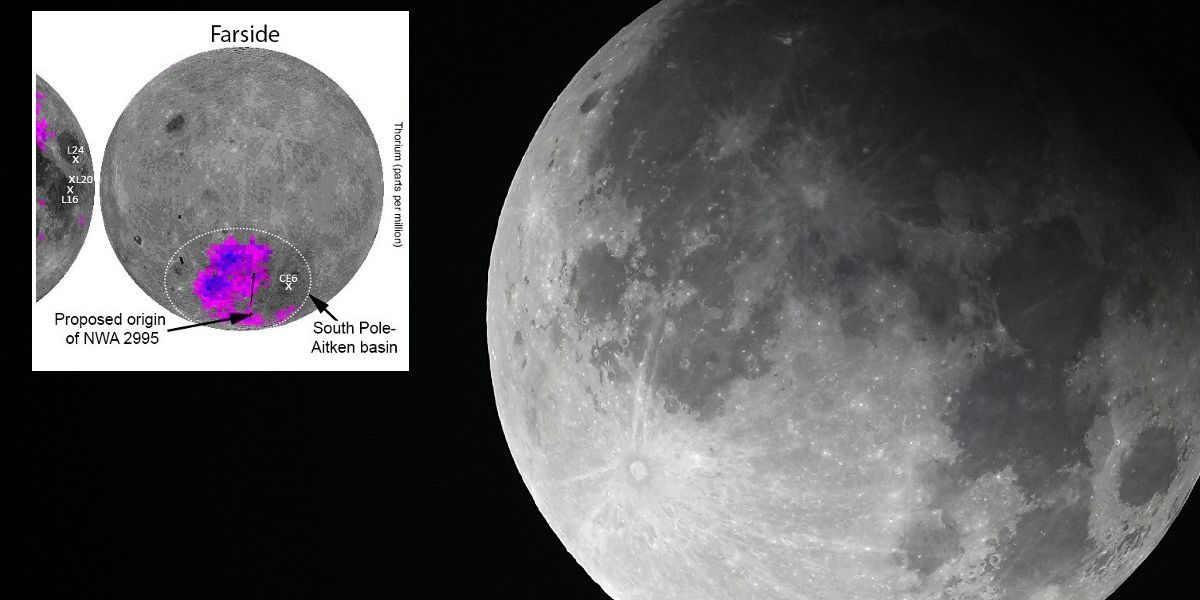Scientists have finally solved a long-standing lunar mystery by determining the age of one of the Moon’s largest impact craters.
The massive South Pole-Aitken basin, stretching over 2,000 kilometres across the Moon’s far side, was formed 4.32 billion years ago, analysis has suggested.
Scientists from the universities of Portsmouth and Manchester reached their conclusion by analysing a lunar meteorite discovered in Algeria in 2005.
The meteorite, known as Northwest Africa 2995, contains fragments of different rock types that were once lunar soil, fused together by an ancient impact event.
Professor James Darling from the University of Portsmouth explained how the team dated the ancient basin.
“By analysing the isotopes of uranium and lead found in a range of mineral and rock fragments within the meteorite, we were able to determine the materials dated back to between 4.32 and 4.33 billion years ago,” he said.
A partial lunar eclipse of a supermoon earlier this year
PA
The research team verified their findings by comparing them with data from Nasa’s Lunar Prospector mission from 1998-1999.
This comparison revealed chemical similarities between the meteorite and rocks within the South Pole-Aitken basin, confirming their connection.
“Importantly, evidence from the internal structure of minerals suggests that this is the timing of an extreme event that reset the ages of the sample,” Darling added.
This discovery challenges previous theories about lunar impacts, according to researchers.
SCIENCE LATEST:
An artist’s rendition of a giant crater on the Moon, with analysis showing it to have been created 4.32 billion years ago
PA
Dr Joshua Snape from The University of Manchester said: “For several decades there has been general agreement that the most intense period of impact bombardment was concentrated between 4.2-3.8 billion years ago in the first half a billion years of the Moon’s history.”
The new dating suggests a different timeline.
“Constraining the age of the South-Pole Aitken basin to 120 million years earlier weakens the argument for this narrow period of impact bombardment on the Moon and instead indicates there was a more gradual process of impacts over a longer period,” Dr Snape explained.
However, researchers suggest the findings have implications beyond lunar science.
People gather as the supermoon rises over St Michael’s Tower, atop Glastonbury Tor
PA
Dr Romain Tartese, senior lecturer at the University of Manchester, highlighted the broader significance: “The implications of our findings reach far beyond the Moon.”
He explained that Earth and Moon likely shared similar early experiences.
“We know that the Earth and the Moon likely experienced similar impacts during their early history, but rock records from the Earth have been lost,” Dr Tartese said.
This makes the Moon’s evidence particularly valuable.
“We can use what we have learnt about the Moon to provide us with clues about the conditions on Earth during the same period of time,” he added.
In a notable development, China’s Change 6 probe made history this year by becoming the first mission to land in the South Pole-Aitken basin.
The probe’s achievement marks the first direct sample collection from the Moon’s far side.
This historic landing in the ancient crater could provide additional insights into the basin’s formation and composition.

